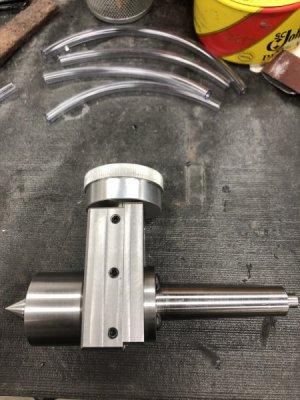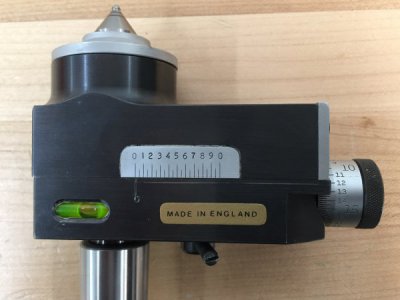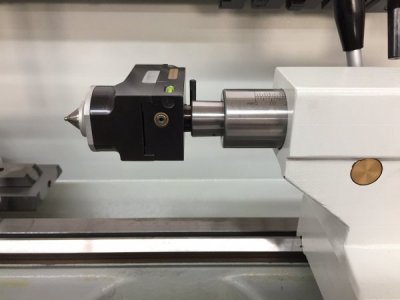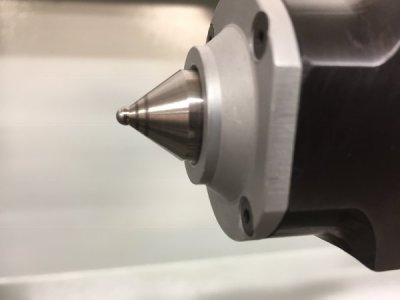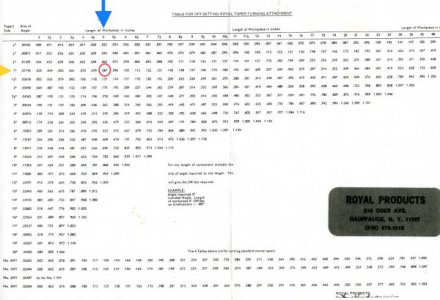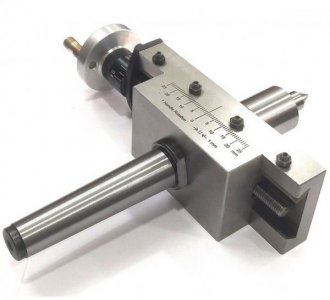Tozguy, yes, the Royal is a tool that is a pleasure to hold in your hand(probably not the best voice of words). The rings were on the tool when I got it and are fortunately just superficial wear marks. I am not sure if the ball tip is carbide but the center is “live”.
Just to, maybe, add a little something to your discussion regarding displacement, I did some tests a while ago to get an idea of what kinds of radial forces cause what kind of displacement of a workpiece. To do this I took a 1-1/2”, 12” MT5 standard rod that was placed directly in the spindle, a 1-1/2” Thomson rod mounted in a 4JC and a 1” Thomson rod in a 5C spindle chuck and pushed on them with a force generator at 0”, 6” and 12” from spindle and measured the displacement. Here is the set-up for the 4JC and the results for all three rods:
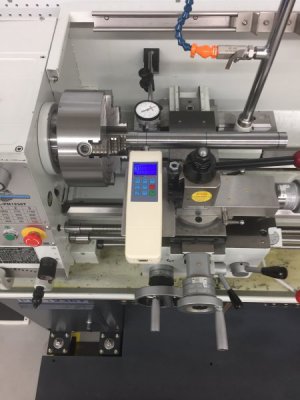
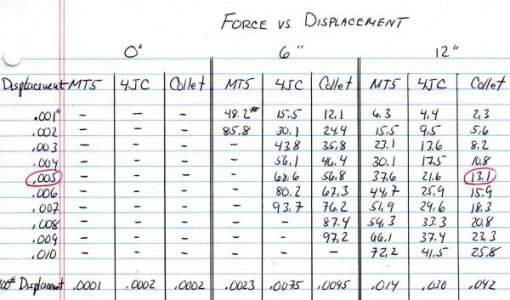
So, just looking at the 4JC at 0” from the spindle, there was no displacement until a 100# force was used; this caused a displacement of only .0002”. At six inches from the spindle a 15.5# force caused a displacement of .001” and at twelve inches from the spindle only 4.4# caused a displacement of .001”. How does this relate to real life? Not sure, but I did do some “live” experiments where I cut a rod unsupported by the Tailstock and measured the displacement while cutting. For example, with the one inch Thomson rod in the collet chuck at twelve inches there was .005” displacement which translates to about 13# of radial force under the cutting conditions I was using. If 13# of radial force is a reasonable ball park figure for a light cut you can go back to the chart and look at 13# for each rod and distance and get an idea of the displacement you will see. Bottom line: Tozguy, I think you are correct that support is key to getting a good cut, secondly, I obviously had too much time on my hands the day I put this stuff together.
TK

